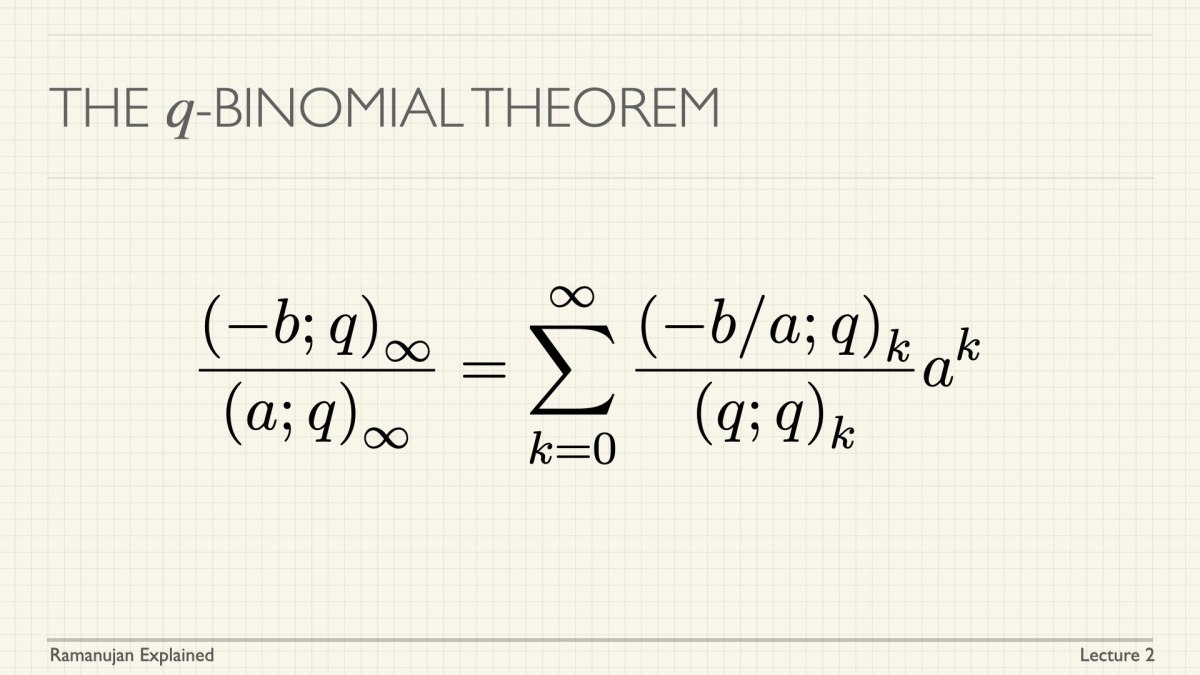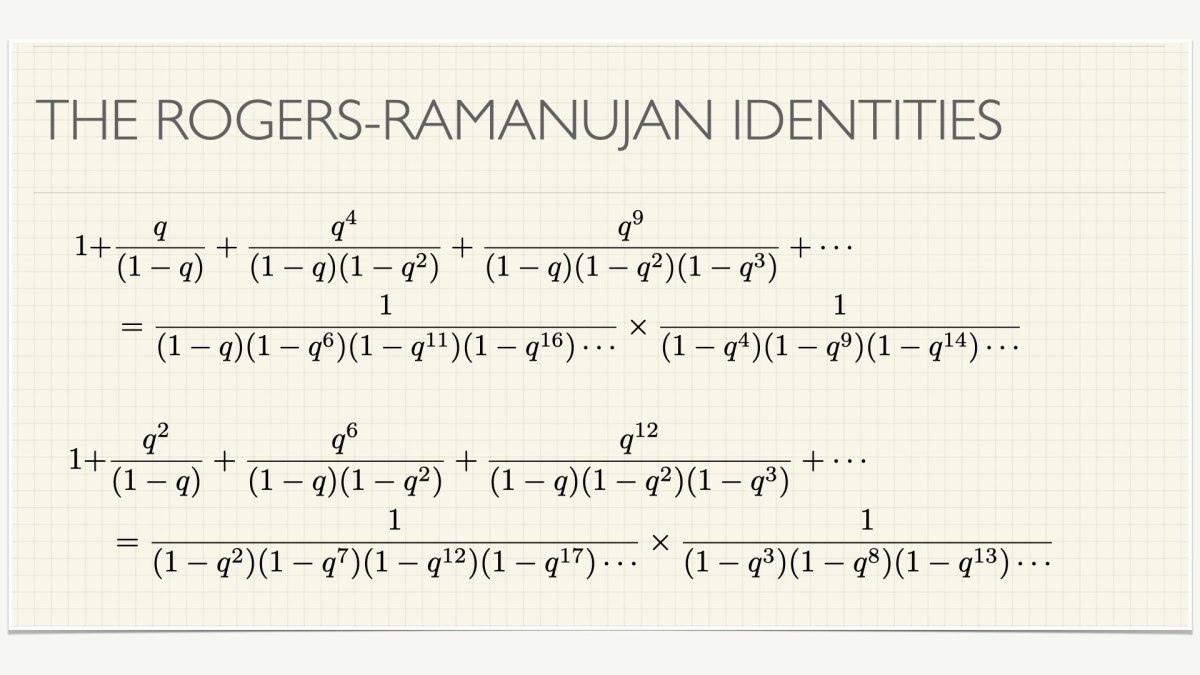We have launched a course under the title of Ramanujan Explained. There will be a series of lectures, all given by Gaurav Bhatnagar, with accompanying notes and exercises. The goal is to cover (a large number of) Ramanujan’s identities. Please share this announcement with students who may be interested in Ramanujan and his mathematics.
The first few lectures will target $q$-hypergeometric series and special cases, and can serve as an introduction to basic hypergeometric series. We hope these lectures will serve as a useful supplement to the monumental work of Bruce Berndt (Ramanujan’s Notebooks I-V) and George Andrews and Bruce Berndt (Ramanujan’s Lost Notebook I-V).

